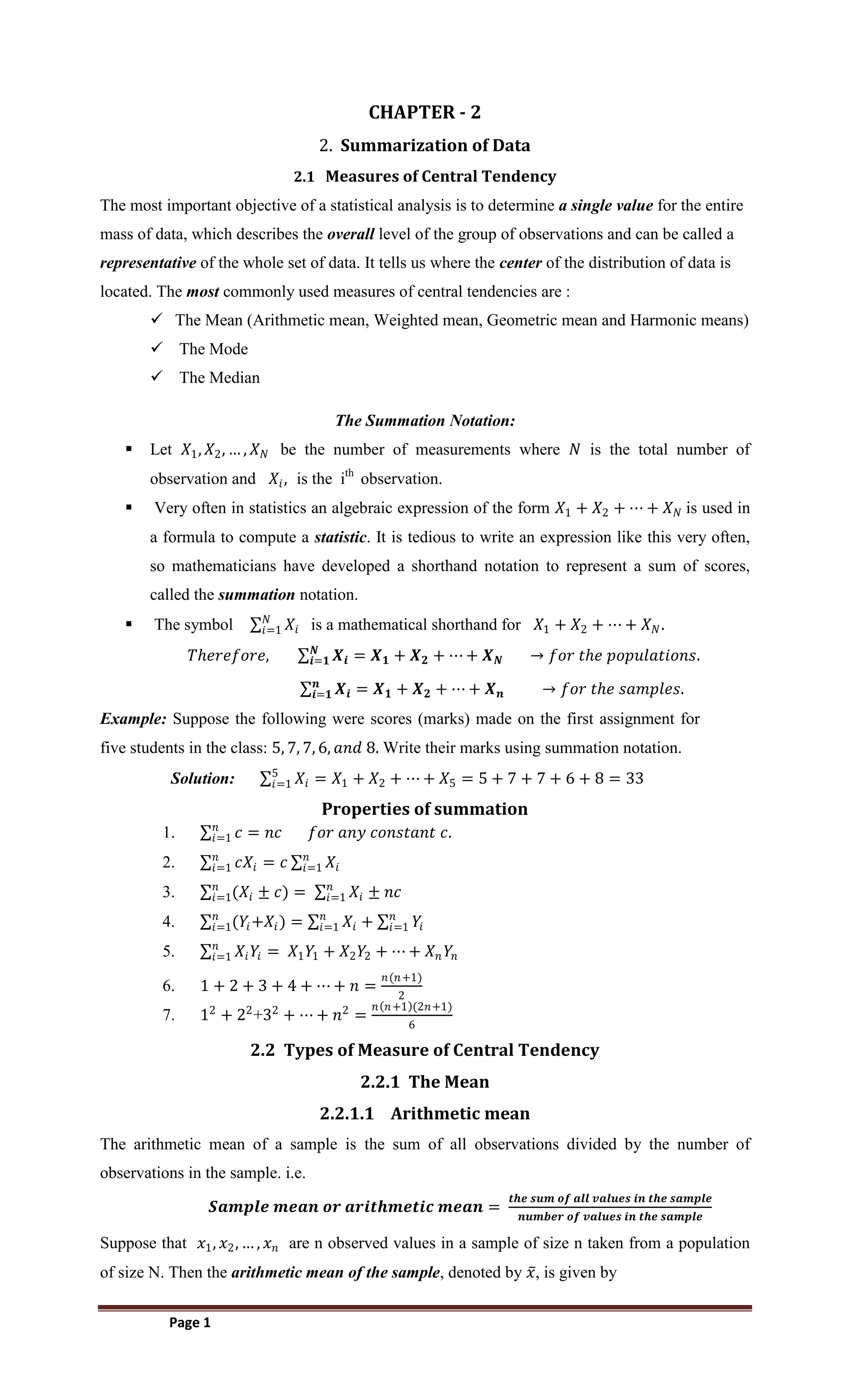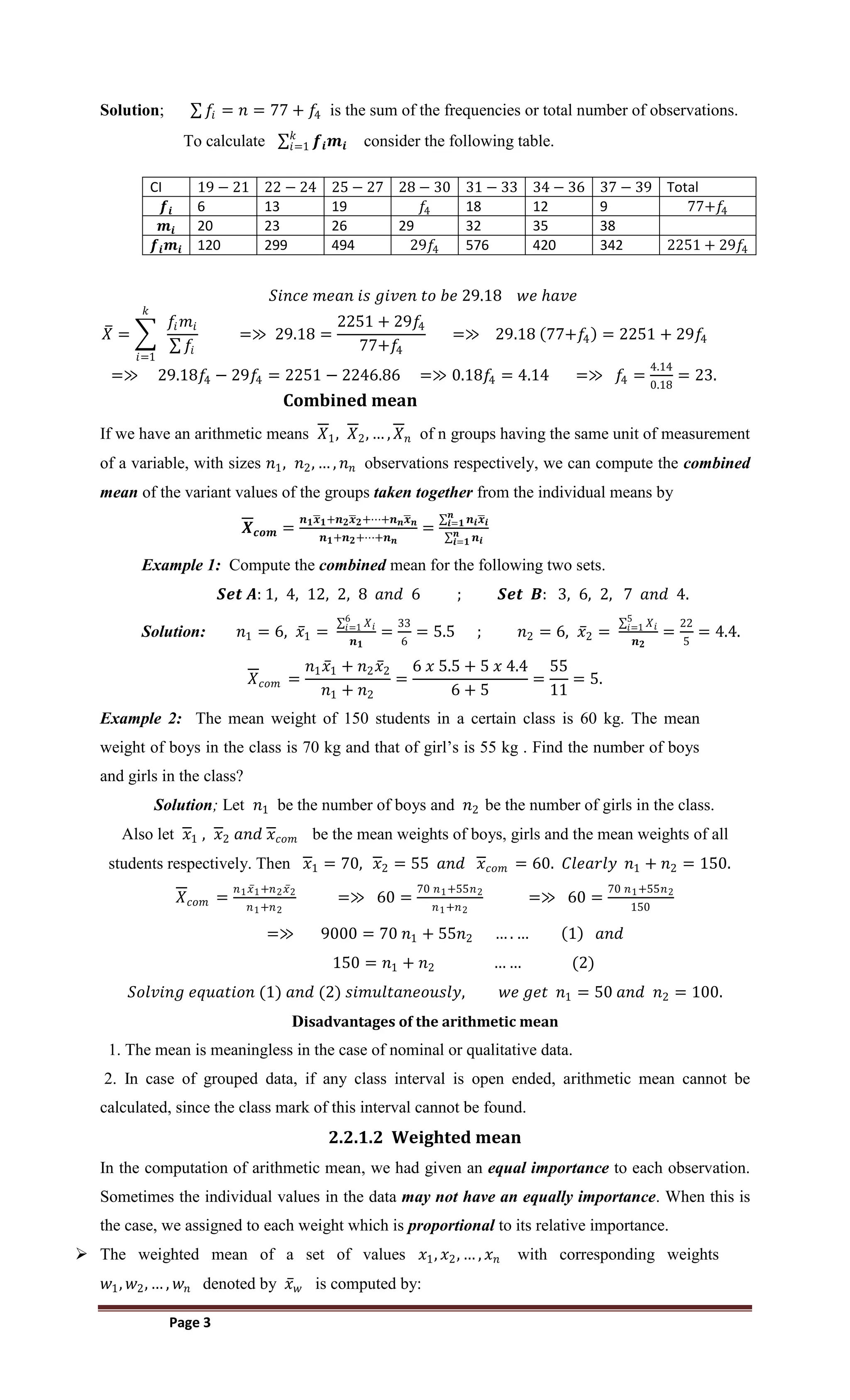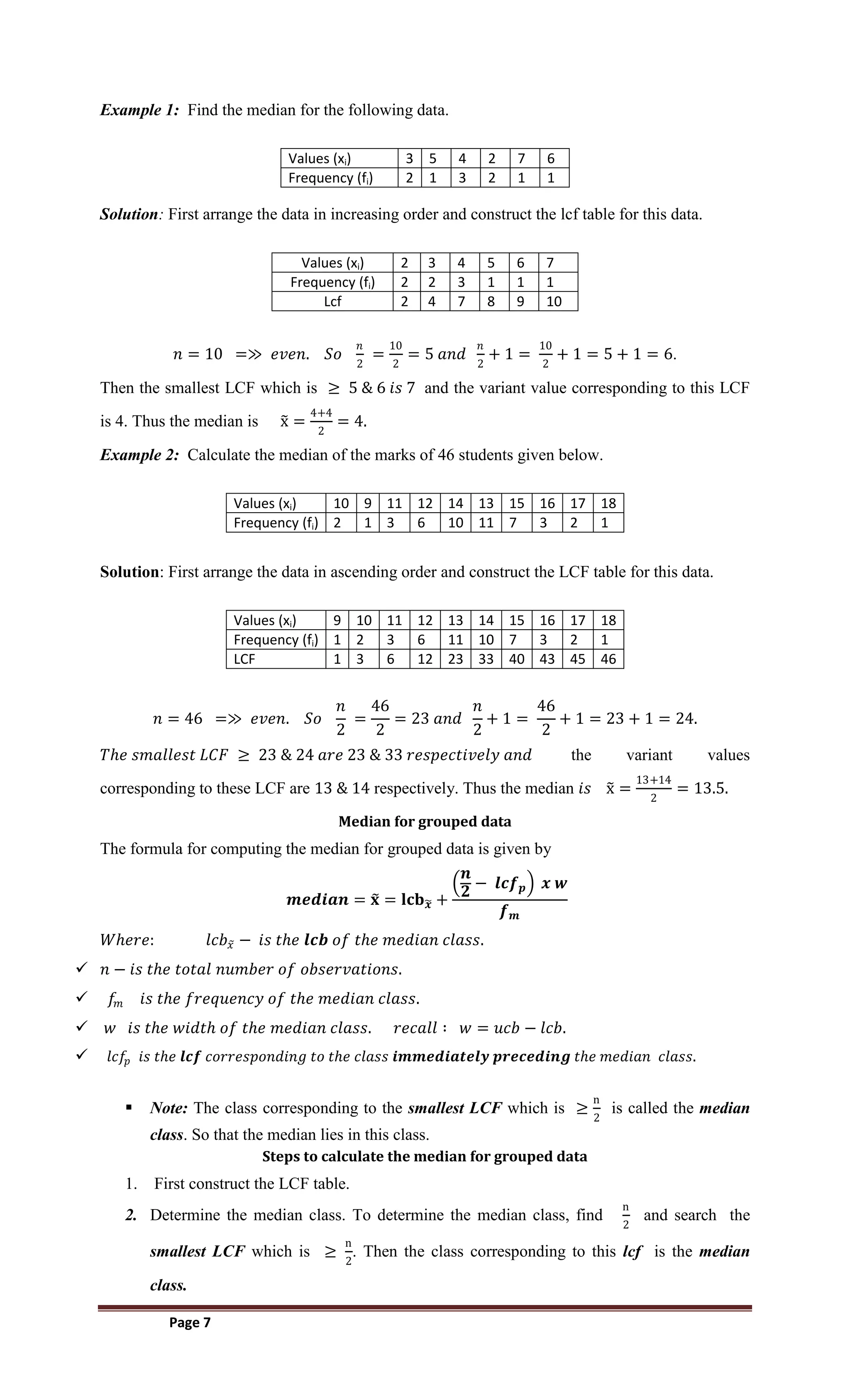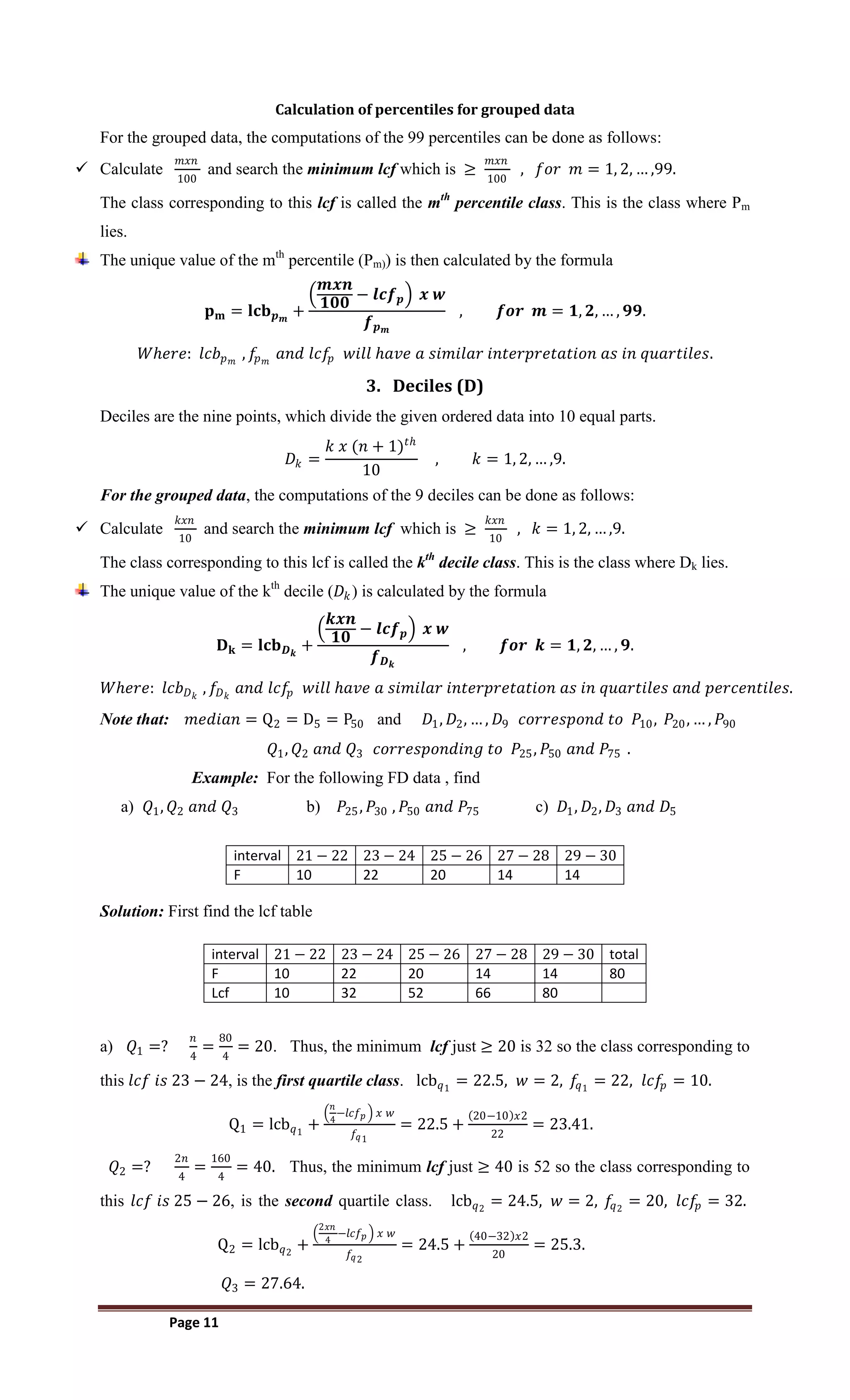The document discusses measures of central tendency and summarization of data. It defines measures of central tendency as single values that describe the overall level of a data set and represent the center of the distribution. The most common measures are the mean, median, and mode. It provides formulas for calculating the arithmetic mean for samples and populations. It also introduces summation notation as a shorthand for writing sums and discusses properties of summation. Examples are provided to demonstrate calculating the mean for raw data, ungrouped data, and grouped data. The document also discusses calculating a combined mean for multiple data sets.













